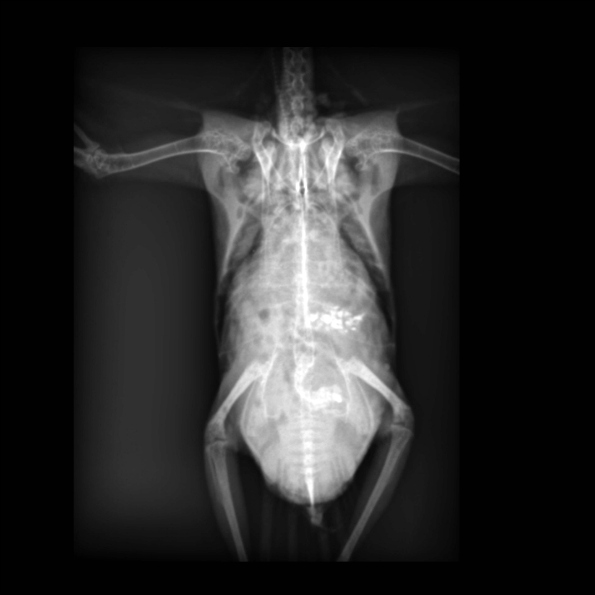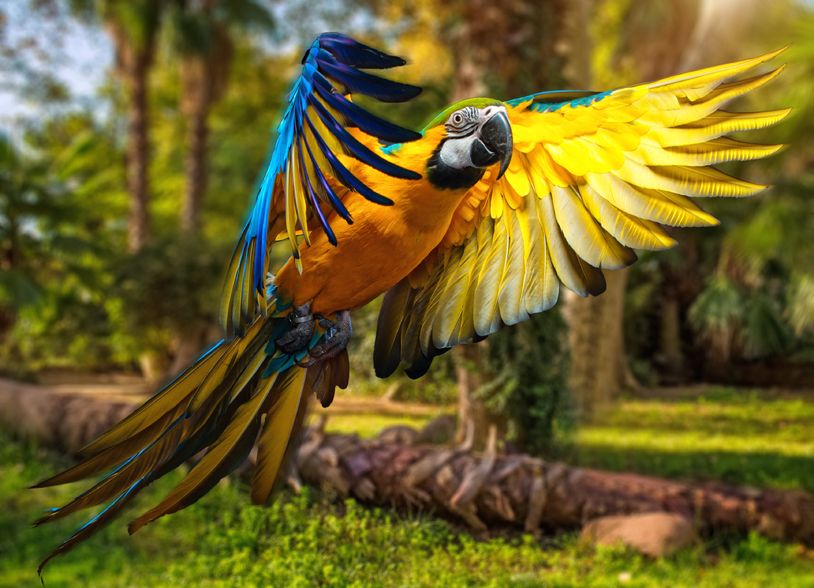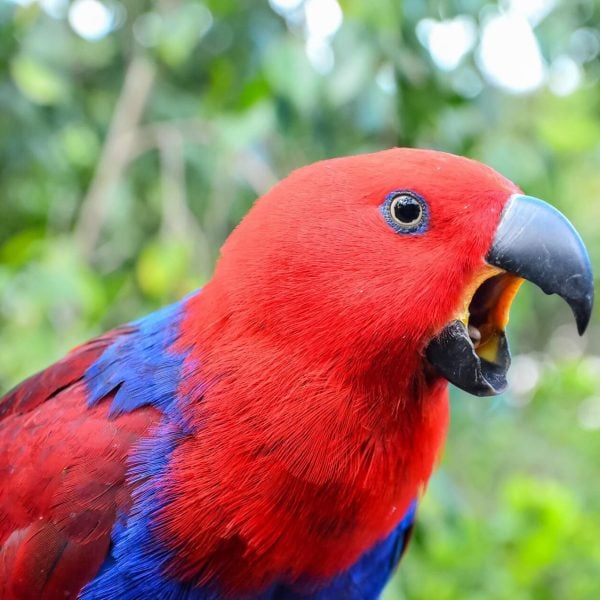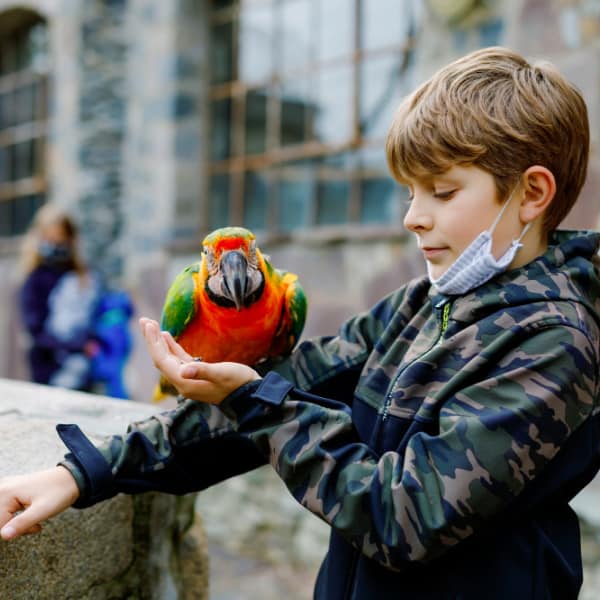
What Do You Know About Macaw Asthma? It’s Really A Thing.
Last Updated on by Catherine Tobsing
This first of three answers about macaw parrot keeping solutions is in response to the Quora question:
Macaw Asthma aka Macaw Respiratory Hypersensitivity disease is found in several species of macaws but is especially prevalent with blue and gold macaws.
Macaw asthma causes an allergic reaction in the bird because it is a lung and airway disease.
If you see a macaw having a hard time breathing and something coming out of its nares (nostrils) is time to seek treatment because permanent lung damage may be occurring.
Powder down birds like greys, cockatoos, and budgies can contribute to macaw asthma but not all macaws are affected by powder down.
The diagnosis of macaw asthma should be done by an avian veterinarian using tools like white blood cell counts which would be elevated.
A lung x-ray may also be part of the diagnosis.
An extreme procedure would be to perform a lung biopsy, and should be avoided but many times cannot when ruling out other respiratory diseases.
I’d like to note unfortunately I need to contradict my esteemed associate who answered this question earlier indicating cockatoos only use their powder down from feathers for preening.
This is incorrect and I have a video here of the world-famous avian veterinarian Dr. Ross Perry entitled “Cockatoo with Tick-like Lump on Eyelid Preen Gland Issues and More #1 050910”.
If you didn’t watch the video or just want to watch it later, one of the interesting things Dr. Perry noted, was the uropygial (preening) gland seemed to be clogged creating a small but nasty problem with the feathers located down around that (cloaca) area.
His comment was the bird may have arthritis in its neck precluding it from accessing the gland which needs to be drained on a regular basis.
Begging the question when was the last time you checked your bird’s uropygial gland and its surrounding area?
Back to the asthma discussion
Thus you are running a risk every time two species of parrots are housed together, both indigenous to separate continents.
Much depends upon the size of the room the 2 species of parrots are in, how often it’s vacuumed, ventilation, air filtration and a huge factor – how often the birds bathe and/or get misted.
People talk a good game about filters, HEPA filters expensive air purifiers – hogwash!
Here’s a video entitled “Build a do-it-yourself air purifier for about $25” done not by a guy named Roy in his garage but “Dr. Jeffrey E. Terrell, director of the Michigan Sinus Center”.
This $25 – $30 home-made air filter removes 90% of air particulate against an $800 HEPA filtering 95% of air particulate as illustrated in the video with science.
Editors note: We just saved you $775, you’re welcome:-)
Conclusion: I suspect that macaw asthma is not all that prevalent otherwise we would see more of it in all of the mind-numbing number of bird rescues that exist today.
From Jessica R
I have a 10 year old blue and gold macaw that I adopted in May of 2016.
He came to me with his wings clipped and I was told by the people I adopted him from that he has been kept that way for his entire life.
His flight feathers are half cut and half full at this point.
I DO NOT want him to be clipped but will it be a hard adjustment for him after spending his life with his feathers clipped?
He spends his days on a very large perch/play stand and I worry that if something spooks him he might fly into something if he has his full flight feathers compared to now when he does a rough glide to the floor.
This is such a dilemma for me because I only want the best for him, does anybody have any input or suggestions?
Again, I DON’T WANT TO CLIP HIS WINGS, my only concern at this point is for his safety.
Hi Jessica,
I don’t know if you followed any of our adventures with Peaches our Senega.?
We were in a very similar situation with her.
When we rescued her she was 7 1/2 years old and had spent seven years in a rescue, coming out of the cage an hour in the morning and an hour in the evening.
She was fully clipped when she arrived at our home and had never fledged.
The experts said she would never fly.
They were wrong.
Years back when we rescued a cockatiel, Popcorn’s wings grew back in about a month.
Peaches the Senegal’s wings took about nine months to fill in, now I’m not surprised because everything that she does with respective flight is still slow including her horizontal speed.
Falling under the category of “be careful what you wish for” is important to remember that a blue and gold macaw parrot is a large bird that flies quite rapidly.
You want to make sure that there’s enough room in your home for the bird to comfortably fly from point A to point B.
The perfect time to start training a bird is in fact with clipped feathers.
Birds don’t need our help in learning to fly.
Living in an interior environment they need our help learning how and where to land.
Large macaws are challenging because of their overall body length reaching as much as 3 feet or longer.
Thus when they land they have to have a place where their tail and wide spread wings aren’t banging into other things.
If you allow your parrot to fly to the back of a chair, expect the chair back to be eaten.
This is why we recommend appropriately designed bird play stands.
A place where your bird will know where to go when out of the cage.
Once you’ve acquired a macaw-sized play stand suitable for a blue and gold macaw you can begin your flight training.
First, you want to test your bird to find out to what degree it can fly.
We do this by holding the bird one or 2 feet above the ground and slightly tossing it to see if it gains or loses altitude and how fast.
If the bird can comfortably glide down from 2 feet, try it from 4 feet.
Once you’re at the point of the bird can glide from 4 feet to the ground without injuring its chest in a rough landing you’re good to go.
You can do things like play a gentle “catch” with the bird with another human in the home.
Allowing the bird to fly from one person to the other and back which can be great fun.
You can use two training “T” stands and allow the bird to fly from one to the other and back increasing the distance between the two until you’re confident the bird knows its boundaries and limitations.
You want to make sure that the bird knows where and how to land on the bird cage which should be the cage top not the front or side of it.
Some birds make the mistake in flight training early on to land on the front of the cage hitting the chest first which could cause an injury.
I would advocate using a clicker and treat training system so the bird is constantly rewarded for positive behavior.
Once the bird is fully flighted and moving about the house in the third dimension (unlike any other pet) you’ll always need to supervise it as you move throughout your palace.
In other words, start walking through doors backward to make sure that you are not opening the door and closing it on the bird’s beak.
Small birds like cockatiels can rotate 90° making it through a narrow door opening.
That is far more difficult for a large bird with a 3-foot wingspan.
A flighted bird is a more confident and less aggressive bird.
Birds use wings for not only flight but also for balance, so your bird will be safer when in the cage, especially at night.
You may want to consider a nail trim if the bird is going to be flying to your hand or arm because it will grab your skin with its zygodactyl feet if landing on your arm which could be a bit painful if all eight nails are as sharp as hypodermic needles.
We recommend placing a “grooming” a.k.a. abrasive perch placed next to a food dish or inside of the cage door.
By placing the pedicure type perch next to a food dish, you’ll find the bird is active while his eating which will help keep the nail tips down as well as your macaw’s beak which it will wipe on the perch to keep it clean and lessen the little cracks that often appear.
We put the grooming perch on the inside of the cage door with birds who are less socialized and harder to coax out of the bird cage.
With the grooming perch installed on the bird cage door (the door must be vertical and not a horizontal landing door) you allow your bird to have the compromise of being outside the cage but still on the cage.
Typically birds are excited when they are allowed to come out so they will do a happy dance on this bird cage door perch which will also help keep its nail tips dull without a severe cut.
The problem with trimming a parrot’s nails severely is you may cut the “quick”, a blood-filled vessel in the toe that will cause the bird to bleed.
If that does happen, in a perfect world you would use a coagulant you purchased prior specifically made for birds to stop the bleeding.
If no coagulant is available you can use cornstarch or drag the bleeding toe over a bar of soap.
I mentioned that wings are used for balance earlier because many humans have the bird’s wings clipped and nails trimmed at the same time using a veterinarian or professional groomer.
The problem here is the bird is now off-balance with clipped wings and lacking the necessary grip to hold onto a perch.
This can become a problem when say, a loud noise late at night spooking the bird who is now flapping uncontrollably because it slipped off the perch that it could not grip, is now falling to the bottom of the cage possibly causing injury to a foot, leg or wing.
In conclusion: kudos for wanting to allow your blue and cold macaws flight feathers to grow out.
You now know what to look for as your bird’s ability to fly (something birds have been doing for 100 million years) within the confines of a physical structure and you now know that you don’t have to clip its wings and can manage your macaw’s flight activities safely.
Best of luck
Dorothy G. asks
Does my 28 year old Blue and Gold Macaw need some sort of grit?
He seems to have trouble emptying his crop and picks on one side of it.
We are feeding your pellets and nutra-berries for treats.
He is very active and seems to enjoy life, but has nothing to do with any toys.
Hi Dorothy
The only types of birds that may need grit are birds that have soft bills like canaries and finches.
For years breeders introduced grit into the diet to help with the digestion of foods as they eat a lot of their seed whole.
A blue and gold parrot is a hookbill bird that is capable of taking all the shells off the seeds and nuts using its beak as a surgical instrument.
I would need to know how you are determining if the bird is having trouble emptying its crop.
That it is picking at its crop indicates a visit to your avian vet is on top of your to-do list.
It is hard to say why the bird has nothing to do with any of its toys other than it doesn’t like any of its toys.
You have to keep experimenting until you find a toy or combination of toys that appeal.
You might have to take some favorite treats and put them within toys.
You might have to take the toys away from the bird and play with them yourself until the bird gets interested have you tried any of these training techniques?
Also, toys in a bird’s cage are the furniture in your bird’s home. Not all toys need to or will be chewed up, they act as comfort pieces.
Some to be sat beside or behind for a safe, quiet area, another to snuggle against at bedtime.
An empty cage can be stressful to a parrot, so don’t take toys out just because they are not being destroyed. Having them line the inside of the cage makes it a cozy home.
Best
Catherine
Author Profile

Latest entries
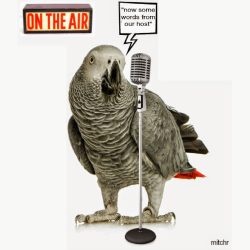 Bird & Parrot CareJune 20, 2025Understanding the Best Way to Use Prevue Pets Mimic Me Voice Trainer
Bird & Parrot CareJune 20, 2025Understanding the Best Way to Use Prevue Pets Mimic Me Voice Trainer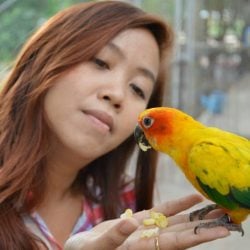 Bird BehaviorJune 6, 2025How Do I Keep My Parrot From Dumping His Food Every Day?
Bird BehaviorJune 6, 2025How Do I Keep My Parrot From Dumping His Food Every Day?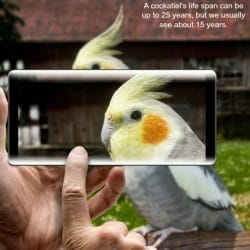 Birds & LightingMay 16, 2025I Am Seeking Clarity About Lighting for My Birds Cage
Birds & LightingMay 16, 2025I Am Seeking Clarity About Lighting for My Birds Cage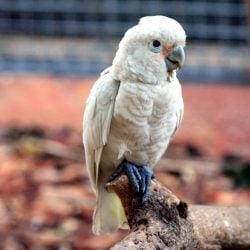 Bird RescueApril 29, 2025How Do We Re-Home a 17 yr Goffin Cockatoo?
Bird RescueApril 29, 2025How Do We Re-Home a 17 yr Goffin Cockatoo?
